Online retrospective of John Smith
Several years ago I watched John Smith’s Hotel Diaries at a festival in Tampere, and left the theater with the feeling that my idea of what film could and should do had changed forever. These short films made in uncomfortable hotel rooms where the director stayed – almost impromptu, without any budget, with a small amateur camera and his own voice – keep the viewer’s attention just as well as a good thriller, although they have nothing in common with one.
Smith does not look for “beautiful” and large-scale shots as an occasion to express himself. Some little thing in an utterly unremarkable hotel room is quite enough for him to launch a chain reaction of associations and cause and effect relations in our heads. They take us so far from the two-dimensional everyday “reality” on the screen that the inevitable return to the “here and now” of the filming location resembles the sudden wakening up from sleep.
When I came home and searched for Smith on the Internet, I realized that I had already come across this filmmaker before. This was the same director who had led the movement on the street crossing in the classic film The Girl Chewing Gum, and who escaped from the terrifying Black Tower on the streets of London in the short thriller of the same name…
We are glad to offer Kinodot viewers a special program of films by John Smith, one of the most interesting and original avant-garde filmmakers of our time.
Mikhail ZheleznikovFilms
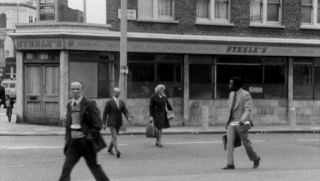 The Girl Chewing Gum
The Girl Chewing Gumby John Smith1976
"In a twelve-minute take of an ordinary busy street, a voice-over seems to direct the random events that unfold there. It quickly becomes evident that the scene is not responding to the voice, but vice-versa. Through staggering image and sound track, the voice seems to gain powerful authority over the scene, predicting events that the images thus confirm. How much is this simple trick like viewing the evening news? Much like Chris Marker’s best work, Smith’s film exposes the constructedness of the real in a way that is fundamentally destabilizing." Collier White, review of exhibition at Artists Space, New York 2007 (...)
 Om
Omby John Smith1986
"This four minute film explores our response to stereotypes - aural, visual and ideological. Smith signals these stereotypes to the viewer through a chiefly associational system, which deftly manipulates the path of our expectations. The structure is stunningly simple and deceptively subtle. We are taken on a journey from one concrete stereotype to its diametric opposite, as images transform and juxtapose to, ultimately, invert our interpretation of what we see and hear." Gary Davis. (...)
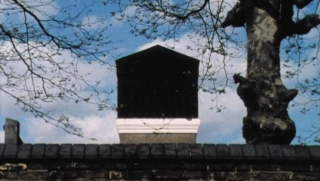 The Black Tower
The Black Towerby John Smith1987
"In The Black Tower we enter the world of a man haunted by a tower which, he believes, is following him around London. While the character of the central protagonist is indicated only by a narrative voice-over which takes us from unease to breakdown to mysterious death. … Smith’s assurance and skill as a filmmaker undercuts the notion of the avant-garde as dry, unprofessional and dull and in The Black Tower we have an example of a film which plays with the emotions as well as the language of film." Nik Houghton, Independent Media (...)
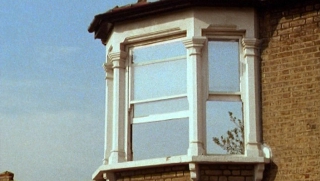 Blight
Blightby John Smith1996
"Blight was made in collaboration with the composer Jocelyn Pook. It revolves around the building of the M11 Link Road in East London, which provoked a long and bitter campaign by local residents to protect their homes from demolition. The images in the film record some of the changes which occurred in the area over a two-year period, from the demolition of houses through to the start of motorway building work. The soundtrack incorporates natural sounds associated with these events together with speech fragments taken from recorded conversations with local people.
Although it is entirely constructed from records of real events, Blight is not a straightforward documentary. The film exploits the ambiguities of its material to produce new meanings and metaphors, frequently fictionalizing reality through framing and editing strategies."
A.L. Rees, A History of Experimental Film and Video, 1999 (...)
 The Kiss
The Kissby John Smith1999
"A particularly beautiful lily seems to grow before our eyes, gradually changing shape; what sounds like breathing on the sound track gives it an almost human presence…"
Fred Camper, Chicago Reader, 2001 (...)
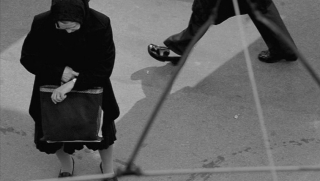 Worst Case Scenario
Worst Case Scenarioby John Smith2003
An exploration of the ambiguities of documentary photographs which develops ideas triggered by a German pun. (...)
 Hotel Diaries. Frozen War
Hotel Diaries. Frozen Warby John Smith2001
Made over six years in the hotels of six different countries, Hotel Diaries charts the “War on Terror” era of Bush and Blair through a series of video recordings that relate personal experiences to the ongoing conflicts in Afghanistan, Iraq and Palestine. In these works, which play upon chance and coincidence, the hotel room is employed as a “found” film set, where the architecture, furnishing and decoration become the means by which the filmmaker’s small adventures are linked to major world events. (...)
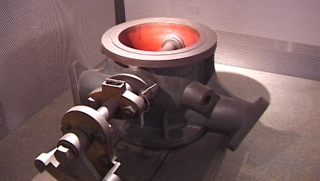 Hotel Diaries. Museum Piece
Hotel Diaries. Museum Pieceby John Smith2004
Made over six years in the hotels of six different countries, Hotel Diaries charts the “War on Terror” era of Bush and Blair through a series of video recordings that relate personal experiences to the ongoing conflicts in Afghanistan, Iraq and Palestine. In these works, which play upon chance and coincidence, the hotel room is employed as a “found” film set, where the architecture, furnishing and decoration become the means by which the filmmaker’s small adventures are linked to major world events. (...)
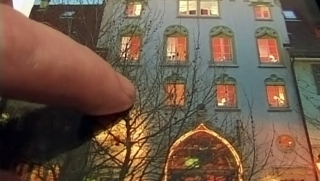 Hotel Diaries. Throwing Stones
Hotel Diaries. Throwing Stonesby John Smith2004
Made over six years in the hotels of six different countries, Hotel Diaries charts the “War on Terror” era of Bush and Blair through a series of video recordings that relate personal experiences to the ongoing conflicts in Afghanistan, Iraq and Palestine. In these works, which play upon chance and coincidence, the hotel room is employed as a “found” film set, where the architecture, furnishing and decoration become the means by which the filmmaker’s small adventures are linked to major world events. (...)
 Flag Mountain
Flag Mountainby John Smith2010
A view across the border in the divided city of Nicosia, from the rooftops of the Greek Cypriot south to the mountains of the Turkish Republic in the north. Moving between macro and micro perspectives, Flag Mountain sets dramatic spectacle against everyday life as the inhabitants of both sides of the city go about their daily business. (...)


